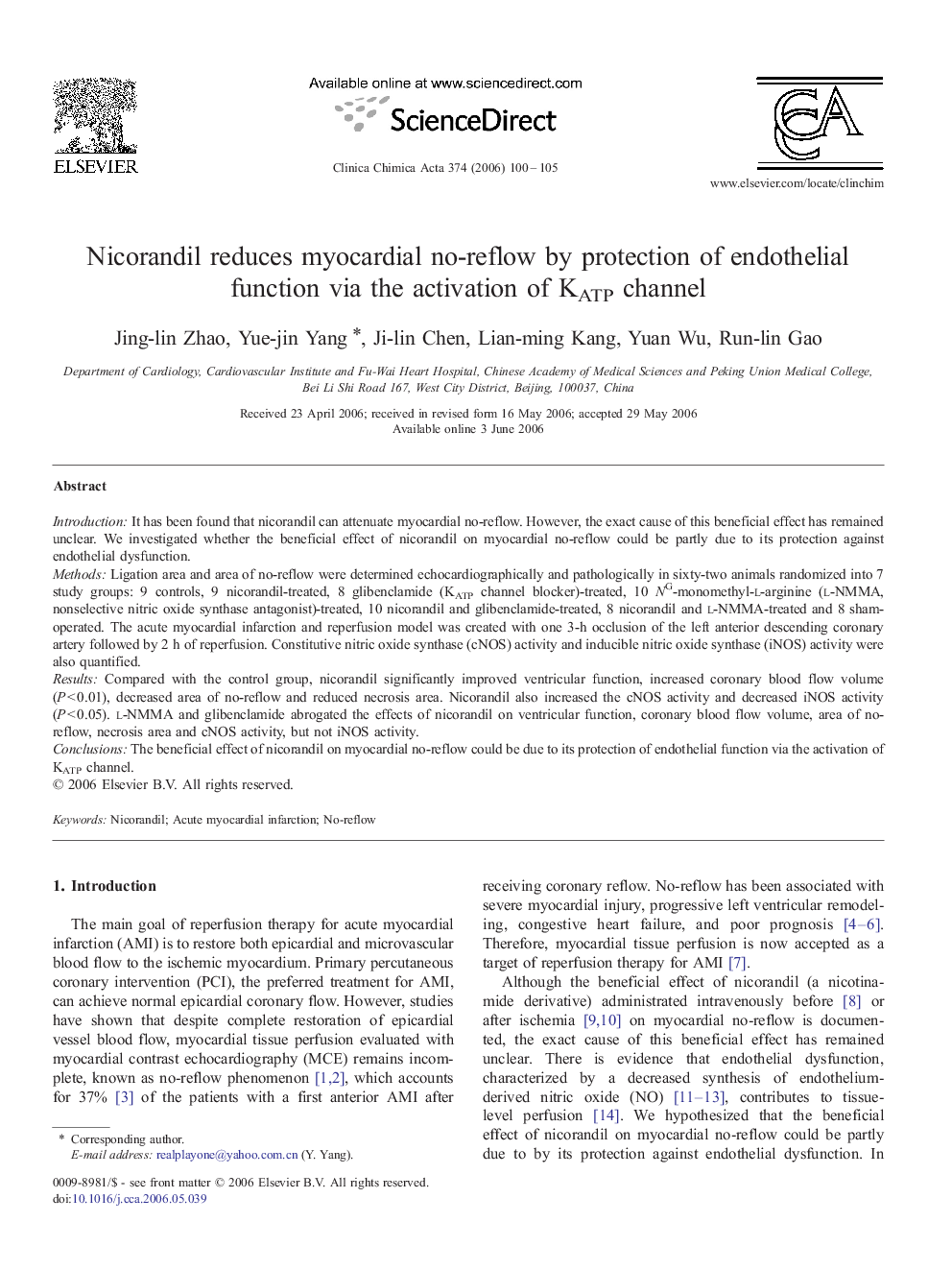| کد مقاله | کد نشریه | سال انتشار | مقاله انگلیسی | نسخه تمام متن |
|---|---|---|---|---|
| 1967945 | 1538754 | 2006 | 6 صفحه PDF | دانلود رایگان |

IntroductionIt has been found that nicorandil can attenuate myocardial no-reflow. However, the exact cause of this beneficial effect has remained unclear. We investigated whether the beneficial effect of nicorandil on myocardial no-reflow could be partly due to its protection against endothelial dysfunction.MethodsLigation area and area of no-reflow were determined echocardiographically and pathologically in sixty-two animals randomized into 7 study groups: 9 controls, 9 nicorandil-treated, 8 glibenclamide (KATP channel blocker)-treated, 10 NG-monomethyl-l-arginine (l-NMMA, nonselective nitric oxide synthase antagonist)-treated, 10 nicorandil and glibenclamide-treated, 8 nicorandil and l-NMMA-treated and 8 sham-operated. The acute myocardial infarction and reperfusion model was created with one 3-h occlusion of the left anterior descending coronary artery followed by 2 h of reperfusion. Constitutive nitric oxide synthase (cNOS) activity and inducible nitric oxide synthase (iNOS) activity were also quantified.ResultsCompared with the control group, nicorandil significantly improved ventricular function, increased coronary blood flow volume (P < 0.01), decreased area of no-reflow and reduced necrosis area. Nicorandil also increased the cNOS activity and decreased iNOS activity (P < 0.05). l-NMMA and glibenclamide abrogated the effects of nicorandil on ventricular function, coronary blood flow volume, area of no-reflow, necrosis area and cNOS activity, but not iNOS activity.ConclusionsThe beneficial effect of nicorandil on myocardial no-reflow could be due to its protection of endothelial function via the activation of KATP channel.
Journal: Clinica Chimica Acta - Volume 374, Issues 1–2, December 2006, Pages 100–105